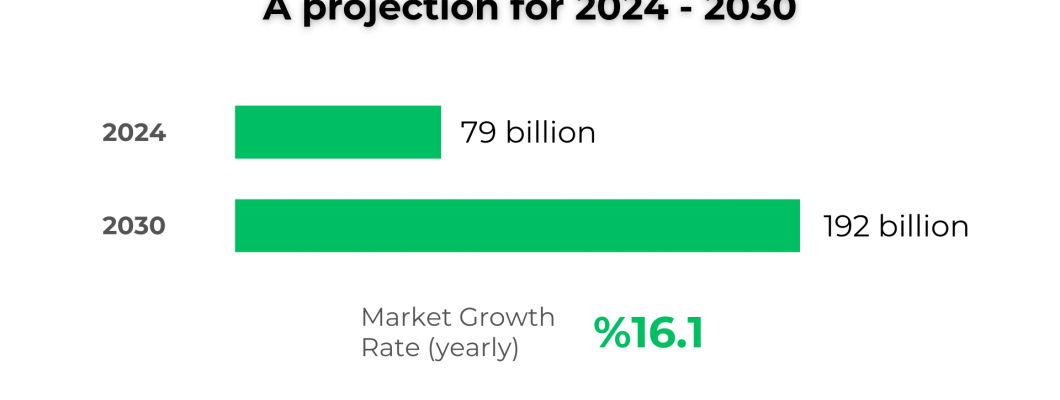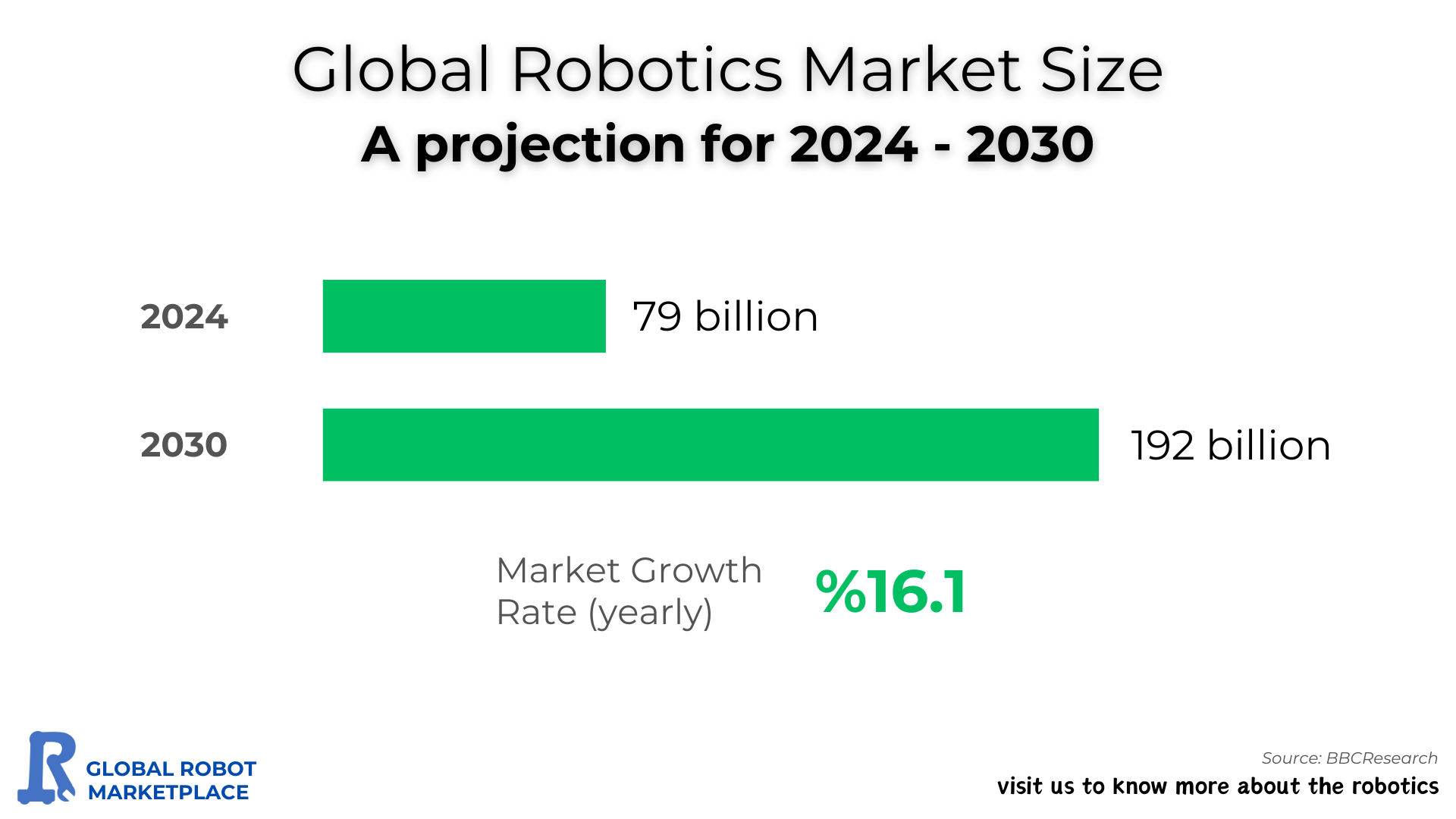
The global robotics market is on a remarkable trajectory of growth. As we enter 2024, the market size stands at approximately $79 billion, driven by an accelerating demand for automation across industries such as manufacturing, healthcare, logistics, and agriculture. This surge in interest in robotic technologies is poised to continue over the coming years, with projections indicating that by 2030, the market will skyrocket to an estimated $192 billion. This represents an impressive compound annual growth rate (CAGR) of 16.10%, underscoring the vast potential of robotics to reshape industries and everyday life.

Key Drivers of Market Growth
Several factors are contributing to the rapid expansion of the robotics market:
Technological Advancements: Robotic systems are becoming more sophisticated and versatile, offering improved functionality, precision, and adaptability. Innovations in artificial intelligence (AI), machine learning, and sensor technologies are enabling robots to perform complex tasks with greater efficiency and autonomy.
Increased Demand for Automation: As industries seek ways to optimize operations and reduce costs, automation is emerging as a key solution. Robotics plays a central role in this trend, with robots being employed in a wide range of sectors, from manufacturing and logistics to healthcare and agriculture.
Aging Populations: In many regions, particularly in developed countries, the aging population is creating a demand for robots to assist with elderly care and other health-related tasks. Robotic systems are being designed to enhance care, improve patient outcomes, and alleviate the pressure on healthcare workers.
Labor Shortages: As the global workforce faces increasing shortages in skilled labor, particularly in manufacturing and logistics, robotics offers a way to bridge the gap. By automating repetitive and physically demanding tasks, robots can alleviate labor shortages and enhance productivity.
Cost Efficiency: Initially, robotics technology was seen as an expensive investment. However, with advancements in robotics, the costs are gradually becoming more affordable, opening doors for smaller businesses and startups to adopt robotic systems in their operations.
Market Segmentation and Applications
The robotics market is highly diverse, encompassing various types of robots and applications:
Industrial Robots: These are the most widely used in sectors like automotive, electronics, and consumer goods. Industrial robots are primarily used for repetitive tasks such as assembly, welding, and material handling.
Collaborative Robots (Cobots): Cobots are designed to work alongside humans safely and are increasingly being used in small and medium-sized enterprises (SMEs). They are perfect for tasks like light assembly, packaging, and quality inspection.
Service Robots: These robots are designed for tasks outside traditional manufacturing, including healthcare, hospitality, and personal assistance. They range from robotic surgical assistants to robots that clean homes or deliver goods in hotels.
Autonomous Mobile Robots (AMRs): Used in logistics and warehouses, AMRs are revolutionizing supply chain management by autonomously transporting goods, improving inventory management, and reducing operational costs.
The Road Ahead: Market Outlook for 2030
The forecast for the robotics market is incredibly promising. With a predicted market value of $192 billion by 2030, this growth represents an ongoing trend towards greater adoption of robotics in all sectors of the economy. As technologies evolve, more industries are likely to embrace robotic solutions, leading to new applications and business models.
The 16.10% annual growth rate suggests that robotics will become an integral part of the global economic landscape. From supply chain automation to healthcare robotics, the potential applications for robots are virtually limitless. Additionally, the continued reduction in cost and complexity will likely lead to further market penetration, making robots a mainstream solution for a variety of tasks.
Conclusion
The robotics market is positioned for exponential growth in the coming years. With a projected rise from $79 billion in 2024 to $192 billion by 2030, the industry’s expansion is indicative of the increasing demand for automation and innovation across a range of sectors. As technology continues to evolve, so too will the potential applications for robots, making them a cornerstone of the future economy. For businesses and industries that embrace robotics, the opportunities for growth, efficiency, and competitiveness are boundless.
